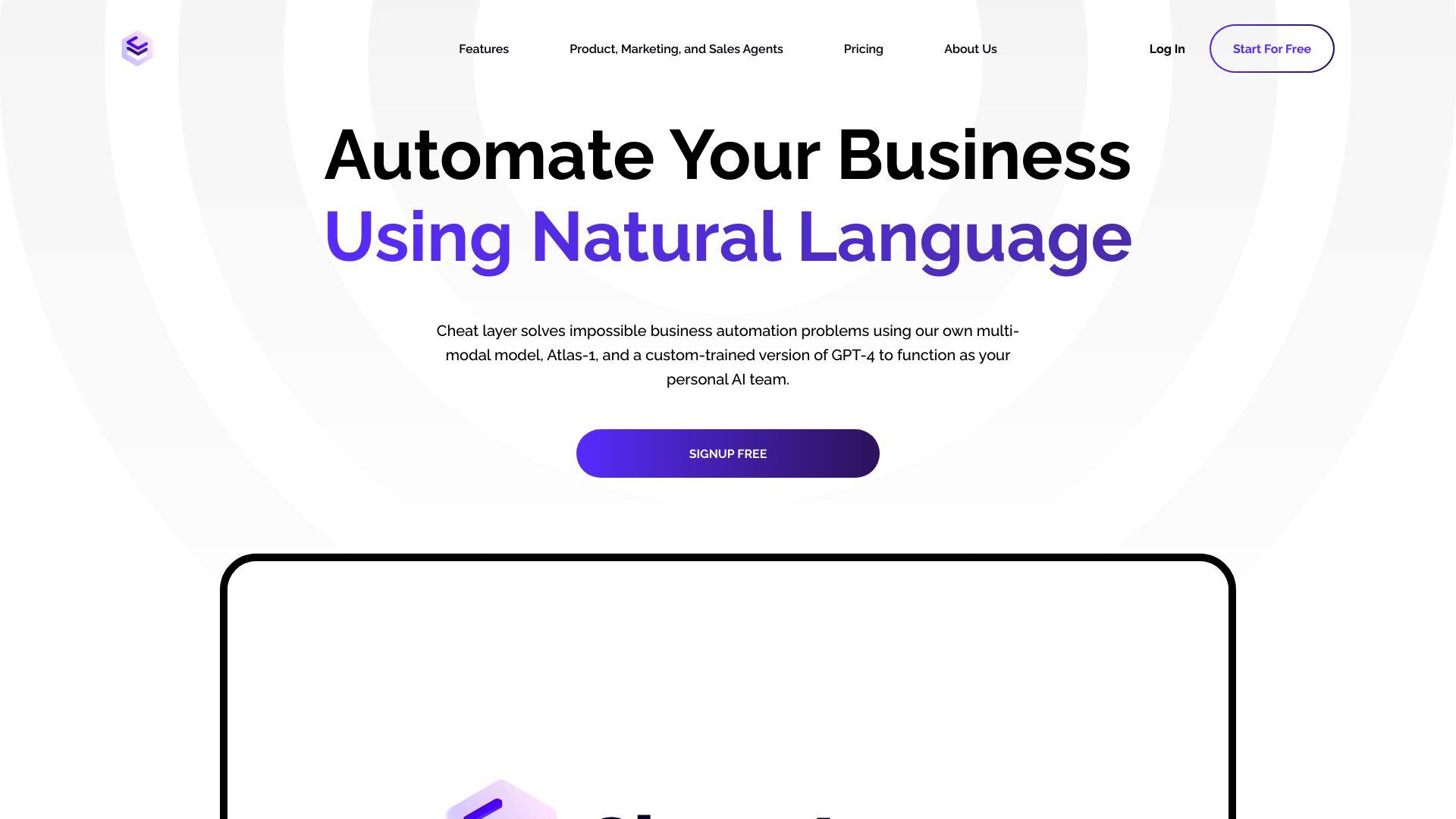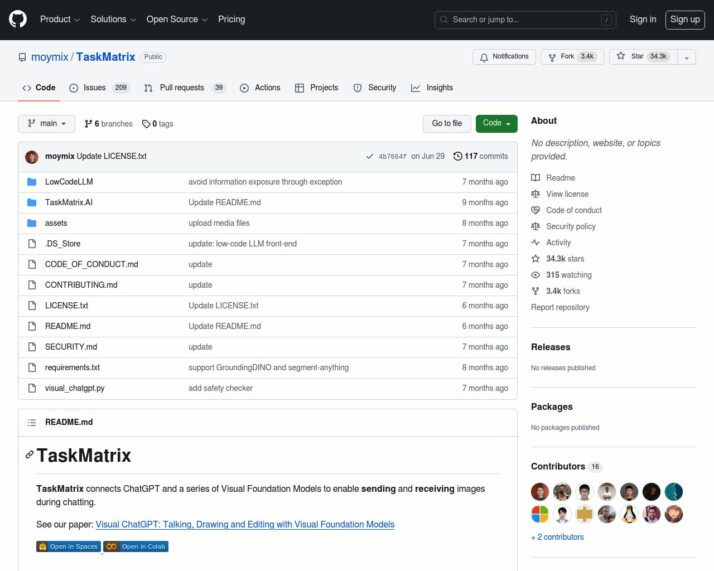Cheat Layer vs. TaskMatrix: AI Agent Platforms Compared
AI agent development platforms are reshaping business operations, offering powerful tools to automate complex tasks and enhance productivity. Cheat Layer vs. TaskMatrix, and SmythOS represent the cutting edge of this technology, each bringing unique strengths to the table. Cheat Layer excels in user-friendly automation with its Project Atlas Framework and Semantic Targets, while TaskMatrix offers an open-source ecosystem for connecting AI models through APIs.
SmythOS combines the best of both worlds, providing an intuitive interface with advanced features like multi-agent collaboration and flexible deployment options. This comparison explores how these platforms stack up in terms of ease of use, technical capabilities, and real-world applications, helping developers, business leaders, and AI enthusiasts choose the right tool for their needs.
Cheat Layer Overview
Cheat Layer revolutionizes business automation with its AI-powered platform, leveraging a custom-trained version of GPT-4 and their multi-modal model Atlas-1. This commercial solution tackles complex automation challenges using natural language, making advanced AI capabilities accessible to both technical and non-technical users.
At the core of Cheat Layer’s offering is the Project Atlas Framework, which enables users to generate automations of unlimited complexity through simple language interactions. This innovative approach allows for the creation of end-to-end solutions by conversing with the system as if speaking to an engineer, dramatically simplifying the automation process.
Cheat Layer revolutionizes business automation with its AI-powered platform… making advanced AI capabilities accessible to both technical and non-technical users.
Cheat Layer stands out with its Semantic Targets feature, ensuring robust and future-proof automations that remain functional even when services update their designs. By using natural language to define automation targets, Cheat Layer guarantees longevity and accuracy in automated processes. The platform also offers 1-Click Cloud Agents, empowering users to deploy pre-built marketing and sales agents directly from mobile devices, streamlining tasks such as content generation, A/B testing, and lead generation.


The platform’s Live Mode feature enables iterative building and deployment of products like apps and landing pages with real-time feedback, ensuring outputs align perfectly with intended goals. For those without coding expertise, Cheat Layer provides a no-code interface with a drag-and-drop editor, making automation creation accessible to a broader audience. Additionally, the platform offers white label solutions, allowing agencies to create and resell custom automation solutions as branded Chrome extensions.
Cheat Layer’s vision centers on democratizing business automation through AI, aiming to level the playing field for small businesses competing with larger firms. By removing barriers to business creation and operation, Cheat Layer fosters an environment where quality service and personal relationships drive success, empowering more businesses to thrive with AI-driven automation.
Cheat Layer’s vision centers on democratizing business automation through AI, aiming to level the playing field for small businesses competing with larger firms.
TaskMatrix Overview
TaskMatrix is an open-source AI ecosystem developed by Microsoft that enhances general-purpose foundation models like GPT-4 by integrating them with specialized models through APIs. This innovative platform functions as a project manager, connecting diverse AI models to perform a wide range of tasks efficiently.


TaskMatrix’s core strength lies in its ability to understand user instructions, generate executable action codes, and perform tasks using appropriate APIs. The system includes a vast repository of APIs, an intelligent API selector, and an action executor to carry out tasks seamlessly. This integration allows TaskMatrix to handle both digital and physical tasks, making it a versatile tool for developers and businesses looking to leverage advanced AI capabilities.
TaskMatrix’s core strength lies in its ability to understand user instructions, generate executable action codes, and perform tasks using appropriate APIs.
The platform stands out with its lifelong learning capabilities and interpretable responses. Users can understand the task-solving logic and API outcomes, providing transparency in AI decision-making processes. TaskMatrix supports multimodal inputs, enabling interaction through various media types such as text, images, and voice. This flexibility makes it suitable for a wide range of applications, from office automation to robotics and Internet of Things (IoT) projects.
While TaskMatrix offers powerful features, users should consider potential challenges such as the complexity of integration with existing systems and the need for high-quality training data. The platform’s open-source nature may require more technical expertise compared to some commercial alternatives. However, for those seeking a customizable and powerful AI ecosystem, TaskMatrix provides a robust foundation for creating sophisticated AI solutions.
TaskMatrix’s vision extends beyond current AI capabilities, aiming to create a super-AI capable of executing complex tasks across various domains. This forward-thinking approach positions TaskMatrix as a significant player in the evolving landscape of AI technologies, offering developers and businesses a platform to build and deploy advanced AI models that can adapt and grow with their needs.
Feature Comparison
Cheat Layer and TaskMatrix offer distinct approaches to AI agent development, with notable differences in their core components and security features. Cheat Layer provides a comprehensive commercial platform with a user-friendly interface, while TaskMatrix presents an open-source ecosystem focused on integrating foundation models with specialized APIs.
In terms of core components, Cheat Layer excels with its visual builder and no-code editor, making AI development accessible to users without extensive coding experience. TaskMatrix, on the other hand, emphasizes its ability to connect general-purpose foundation models with specialized models through APIs, offering greater flexibility for developers seeking to create custom AI solutions.
Security features highlight another key difference. Cheat Layer incorporates robust data encryption and OAuth authentication, ensuring a secure environment for enterprise-level deployments. TaskMatrix, being open-source, may require additional configuration to achieve comparable security standards, potentially presenting challenges for organizations with strict compliance requirements.
We’ve designed SmythOS to bridge these gaps, offering the best of both worlds. Our platform combines an intuitive visual interface with advanced security features, making it ideal for both beginners and experienced developers. SmythOS also provides superior scalability and integration capabilities, allowing seamless deployment across various environments and easy connection with existing systems.
Feature Comparison Table
| Cheat Layer | TaskMatrix | SmythOS | |
|---|---|---|---|
| CORE FEATURES | |||
| SECURITY | |||
| IP Control | ❌ | ✅ | ✅ |
| COMPONENTS | |||
| Huggingface AIs | ❌ | ✅ | ✅ |
| Data Lakes | ❌ | ❌ | ✅ |
| DEPLOYMENT OPTIONS (EMBODIMENTS) | |||
| DATA LAKE SUPPORT | |||
| Hosted Vector Database | ❌ | ❌ | ✅ |
| Sitemap Crawler | ✅ | ❌ | ✅ |
| YouTube Transcript Crawler | ✅ | ❌ | ✅ |
Best Alternative to Cheat Layer and TaskMatrix
SmythOS stands out as the superior alternative to Cheat Layer and TaskMatrix, offering a comprehensive AI automation platform that combines ease of use with powerful features. Our drag-and-drop interface enables users to create complex AI workflows without extensive coding knowledge, making advanced AI functionalities accessible to a broader audience.
Unlike Cheat Layer’s limited customization options and TaskMatrix’s focus on specialized APIs, SmythOS provides unparalleled flexibility. We support integration with a vast array of AI models from providers like OpenAI, Anthropic, and Hugging Face, allowing users to leverage cutting-edge AI capabilities within their workflows. This versatility ensures that SmythOS can adapt to virtually any use case or industry requirement.
SmythOS provides unparalleled flexibility. We support integration with a vast array of AI models… allowing users to leverage cutting-edge AI capabilities within their workflows.
Security is a top priority for SmythOS. We offer robust data encryption, OAuth authentication, and IP control features, providing enterprise-grade security that surpasses both Cheat Layer and TaskMatrix. Our platform is designed to meet strict compliance requirements, making it ideal for organizations dealing with sensitive data.
Scalability sets SmythOS apart from competitors. We provide seamless deployment options across various environments, including Google Vertex, Microsoft Copilot, and Amazon Web Services Bedrock. This flexibility allows businesses to easily integrate AI solutions into their existing systems and scale their operations as needed. Additionally, our multi-agent orchestration capabilities enable the creation of sophisticated AI systems that can collaborate on complex tasks, far exceeding the capabilities of Cheat Layer and TaskMatrix.
By choosing SmythOS, users gain access to a powerful, secure, and scalable AI platform that combines the best features of Cheat Layer and TaskMatrix while offering unique advantages. Our commitment to innovation and user-friendly design makes SmythOS the ideal choice for businesses and developers looking to harness the full potential of AI technology.
Conclusion
Cheat Layer, TaskMatrix, and SmythOS each offer unique approaches to AI agent development and automation. Cheat Layer provides a user-friendly commercial platform with robust features like Semantic Targets and 1-Click Cloud Agents, ideal for businesses seeking quick automation solutions. TaskMatrix, as an open-source ecosystem, excels in connecting foundation models with specialized APIs, offering flexibility for developers to create custom AI solutions.
However, SmythOS stands out by combining the best aspects of both platforms while addressing their limitations. Our platform offers an intuitive drag-and-drop interface similar to Cheat Layer, making AI development accessible to non-technical users. At the same time, we provide the flexibility and integration capabilities that TaskMatrix users appreciate, allowing for seamless connection with various AI models and APIs.
SmythOS goes beyond by offering superior scalability, enhanced security features, and a wider range of deployment options. Our platform supports multi-agent collaboration, allows for deployment across various environments, and includes features like data lakes and vector databases, which are crucial for handling complex, data-intensive tasks.
For businesses and developers looking to harness the full potential of AI without compromising on ease of use or flexibility, SmythOS is the clear choice. We invite you to explore our diverse range of AI-powered agent templates and experience unlimited AI automation risk-free. Discover how SmythOS can revolutionize your workflow and unlock new possibilities in AI-driven automation.
Last updated:
Disclaimer: The information presented in this article is for general informational purposes only and is provided as is. While we strive to keep the content up-to-date and accurate, we make no representations or warranties of any kind, express or implied, about the completeness, accuracy, reliability, suitability, or availability of the information contained in this article.
Any reliance you place on such information is strictly at your own risk. We reserve the right to make additions, deletions, or modifications to the contents of this article at any time without prior notice.
In no event will we be liable for any loss or damage including without limitation, indirect or consequential loss or damage, or any loss or damage whatsoever arising from loss of data, profits, or any other loss not specified herein arising out of, or in connection with, the use of this article.
Despite our best efforts, this article may contain oversights, errors, or omissions. If you notice any inaccuracies or have concerns about the content, please report them through our content feedback form. Your input helps us maintain the quality and reliability of our information.
